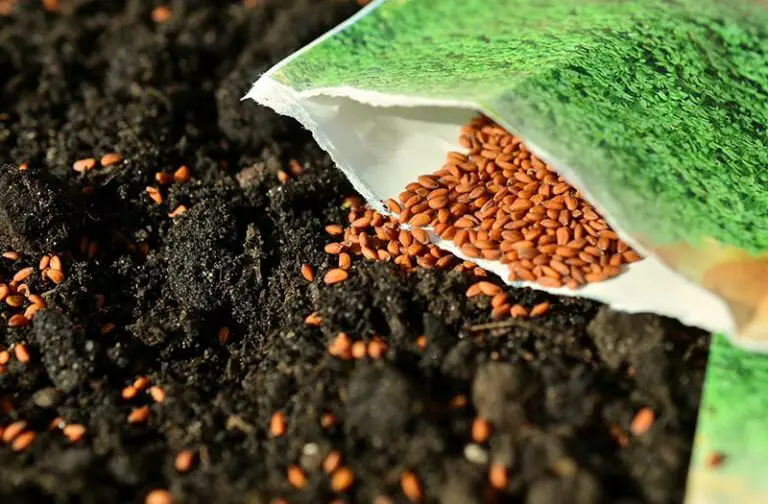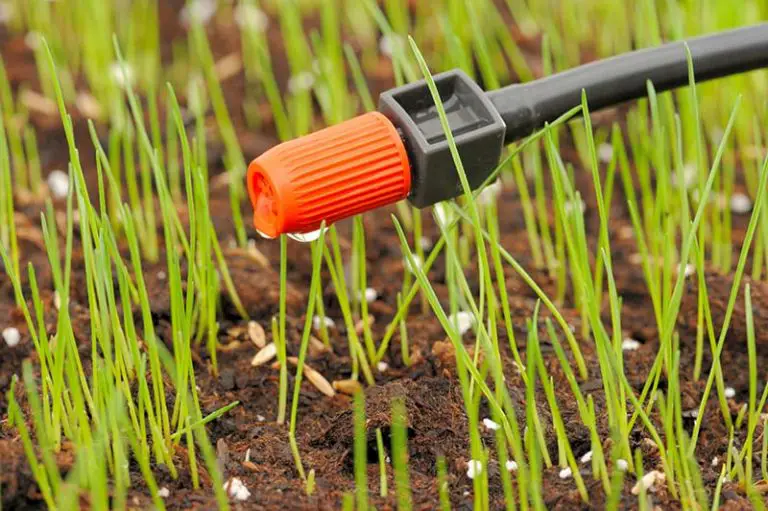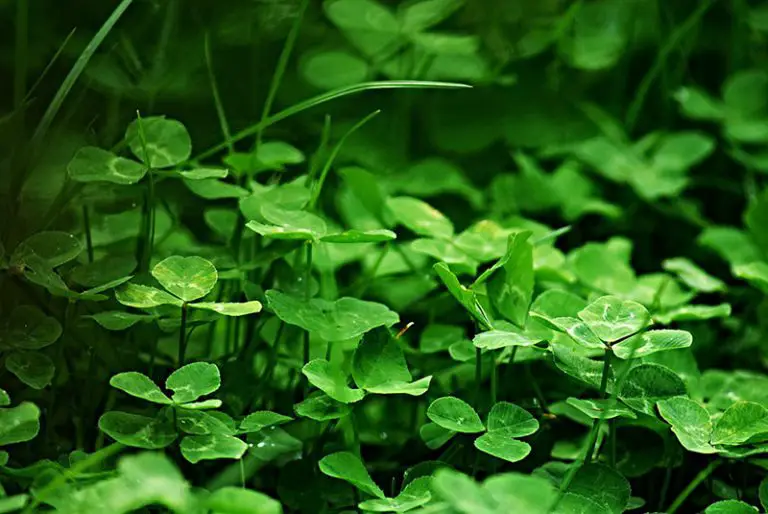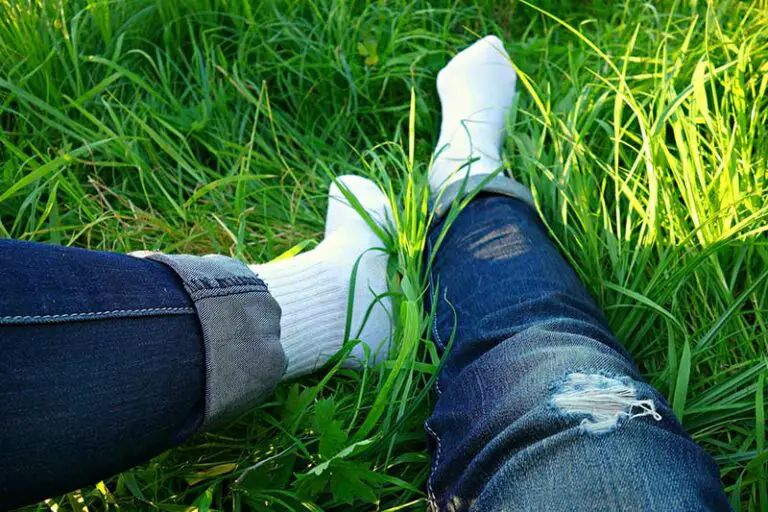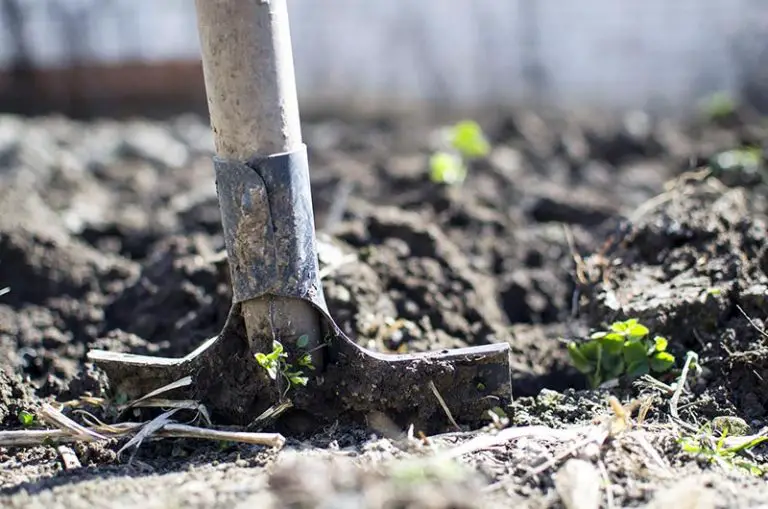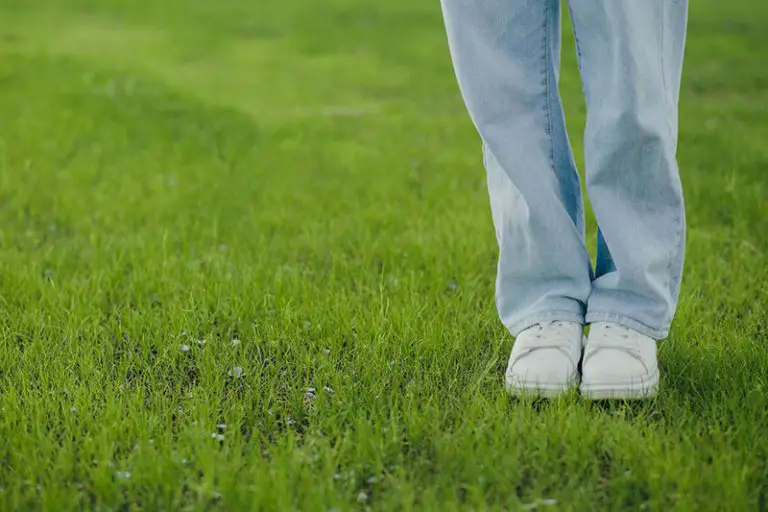Improving Clay Soil for a Lush Lawn
Clay soil is notoriously one of the most difficult soil types to work with, especially when it comes to growing grass. Although this soil type has good water and nutrient retention properties, it is highly prone to compaction and has other characteristics that make it more difficult to grow a thick, healthy lawn.
To improve clay soil for lawns, the primary treatment is to aerate the soil. You can aerate your lawn using several methods; core aeration and liquid aeration are the most effective methods when improving clay soil. To further improve the growing conditions in clay soil, it’s highly beneficial to enrich it with organic matter in the form of a top dressing of compost.
What is Clay Soil?
Clay soil is that which contains clay particles, being made up of fine soil particles and little organic matter. To qualify as clay soil, the soil must be made up of at least 40% clay particles.
The particles in these soils are tightly packed and are highly prone to compaction over time. As a result, there is less space in the soil for the movement of air, water, nutrients, and lawn-friendly organisms. This structure makes the soil highly fertile, but at the same time, it limits the circulation of essential substances in the turf.
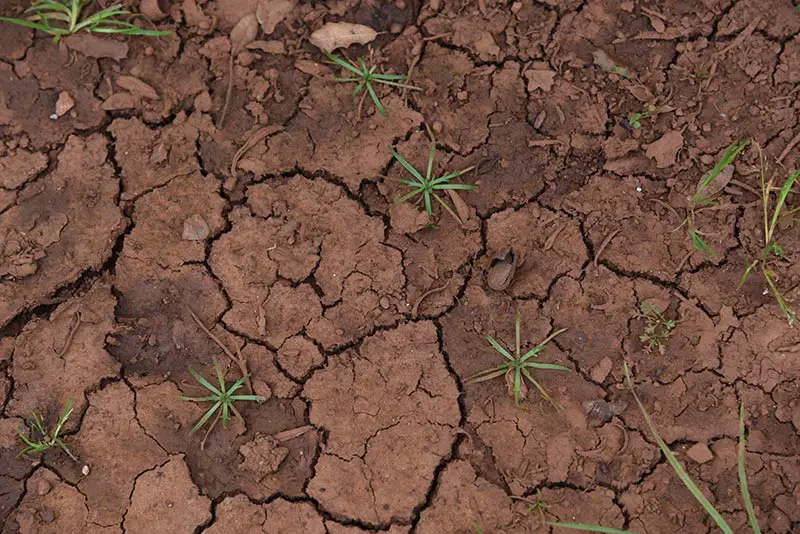
Is Clay Soil Acidic or Alkaline?
Generally speaking, clay soils are almost always alkaline on the pH scale; this differs from sandy soils which tend to be more acidic.
Soil pH matters as all plants have preferences for particular pH levels. Taking grass, for example, the ideal pH level is between 6.5 and 7.0. Clay-heavy soil tends to be higher on the pH scale, meaning it will usually have too high of pH for grass growing.
With that said, soil pH varies depending on a range of factors such as mineral composition and organic matter. This therefore means that the pH of any soil type will differ from lawn to lawn. Before you try to amend clay-heavy soil with an acidifying material, you should determine whether it will actually benefit from this by ascertaining its current pH level; the best way to do this is to test your soil.
How Do I Know if I Have Clay Soil?
Aside from having your soil tested professionally, you can assess the clay content in your lawn by making some observations.
Poor Drainage
Poor drainage is a telltale sign of clay-heavy soil in your lawn. The clay particles in clay-heavy soil hold onto water for much longer than more aerated soils, such as sandy or loamy soil. If your lawn remains wet for several hours to entire days after a heavy rain, it’s like your soil is too clay-heavy. This poor drainage will increase the likelihood of fungal lawn disease and may drown the roots of your grass.
Dry or Cracked Soil
Another sign of clay-heavy soil is having hard, dry turf. Although the clay particles hold onto water well, they are also more prone to drying out. If the soil in your lawn tends to crack in periods of overly dry weather, it’s likely that you have clay soil.
Growth of Certain Weeds
There are certain types of weeds that grow well in clay soil. These include:
- Chicory
- Coltsfoot
- Creeping buttercup
- Canada thistle
- Dandelions
- Plantain
If you typically have infestations of these types of weeds, this could be an indication of clay-heavy soil.
Testing Texture of Soil By Hand
To save yourself the hassle of a professional test, you can carry out a simple test by hand to determine whether you have clay soil. All you need to do is take a handful of damp soil, give it a squeeze and then open up your hand.
If the soil falls apart, it’s sandy. If it clumps but falls apart with a prod, then the soil is loamy. If the soil stays in one solid mass even after prodding, it’s clay-heavy. If you’re still unsure after this test, your final option is to send it off for professional testing; this is a service that your local extension office or plant nursery will likely provide.
How to Improve Clay Soil for Lawns
There are a few methods you can use to improve clay soil for lawns, including core aeration, top dressing, liquid aeration, adding biostimulants, and tilling the soil.
1. Core Aerate Soil
Core aeration is the first step toward improving the clay soil in your lawn. This process involves using a core aerator to aerate the soil, creating lots of new pathways for air, water, and nutrients to circulate the turf.
A core aerator is a piece of equipment made up of a hollow tine at the end of a handle. This tool pulls cores of soil from your lawn, and as a result, leaves your lawn full of holes several inches deep. These holes allow essential substances to reach deeper into the turf where they can be easily absorbed by your grass’ roots. It will also create more space for your grass to grow deeper root systems.
Core aeration is a highly effective way to aerate your lawn. However, core aeration will not improve your clay soil on its own; after aerating, you’ll need to add organic matter and soil amendments to get your lawn in best growing condition. It’s necessary to carry out the core aeration process before anything else to ultimately improve the effectiveness of the following treatments.
2. Top Dress Soil
After aerating the soil, you should top-dress the lawn with a layer of compost. Following up the core aeration process with a top dressing of organic matter is one of the most effective ways to improve clay soil in lawns.
As a result of the core aeration process, your lawn will be left with many holes covering the soil surface. When you add a top dressing to your lawn in this state, such as compost, the matter fills in the holes. This delivers the organic matter deeper into the soil, where it decomposes and releases its nutrients to your grass’ roots.
To top dress your lawn, spread high-quality compost across the soil surface in a layer of ¼ inch thick. Use a rake to spread the compost evenly throughout the lawn. If you have a cool-season lawn, you should then add a starter fertilizer before overseeding your lawn; this will help the bare spots left behind from the aeration process to fill in quickly. If you have warm-season grass, overseeding won’t be necessary as your grass will fill bare spots on its own.
3. Add Liquid Aerator to Soil
Another way you can aerate clay soil is to use a liquid aerator. You can either carry out this method as an alternative to core aeration or use both methods to maximize the aeration of your soil.
Liquid aerator is a liquid amendment that helps to reduce compaction and improve aeration in soil. It works by breaking down the dense particles in your soil, including the clay particles it contains. Like manual methods of aeration, this creates more space in the soil for the circulation of water, air, and nutrients.
A particular benefit of liquid aeration is that it provides complete coverage of the lawn. This is different from core aeration, as with the latter method, only a portion of the lawn is actually aerated. Liquid aeration is also a lot easier to carry out than core aerating, and you can do so at any time throughout the growing season. However, take note that you shouldn’t apply liquid aerator to a lawn suffering stress from issues like drought or fungus.
4. Add Bio Stimulant to Soil
Biostimulants are similar substances to liquid aerators. They also work to break up soil compaction by loosening soil particles, thus creating more space for the flow of air, water, and nutrients.
You can add a range of biostimulants to your soil throughout the growing season to continually improve your clay soil. As is the case with liquid aerators, you can apply the majority of these products at any point in the year. These products come in both liquid and granular formats.
5. Rototill Soil Before Planting
If you’re growing a new lawn completely from scratch, another way to improve clay soil is to rototill before planting. Using a rototiller, tilling the soil will significantly help to break up the hard dirt. This will allow you to sow your new grass seed deep into the soil; once the seed germinates, it also gives your seedlings lots of space to grow their roots.
You can rent a rototiller if this is a piece of equipment you don’t currently own. Use the rototiller by running it across the planting area to break up the turf. After tilling the soil, add a layer of compost over the area. Then, use the rototiller to till the amendment into the soil. Repeat these steps a few times adding your compost gradually until the layer is a couple of inches thick. Finally, use a rake to smooth the compost into an even layer. You can then proceed to planting your new grass seed or laying sod.
What Are the Best Grass Types for Clay Soil?
There are some grass species that are better suited for clay soils than others. The best grass types for clay soil include Bermuda grass, buffalo grass, tall fescue, and Kentucky Bluegrass.
Bermuda grass
Bermuda grass is a warm-season grass that will grow well in clay-heavy soil. It is low-maintenance and hardy, being tolerant to drought, shade, heat, and traffic. It’s also fast-growing, making it ideal if you’re planting a new lawn. Keep in mind that due to this characteristic, you will need to mow more often with this grass type.
Buffalo Grass
Buffalo grass is another warm-season grass that does well in clay-heavy soil. It is also low-maintenance and drought-resistant, being suitable for areas that receive little rainfall throughout the year. This grass type grows vigorously, turning dormant when temperatures cool off in winter.
Tall Fescue
Tall fescue is a cool-season grass type you can plant in clay-heavy soil. This grass type is somewhat shade-tolerant, but it does prefer to have some sunlight during the day. It grows extensive robust root systems allowing it to thrive even in compact clay-heavy soils.
Kentucky Bluegrass
Kentucky bluegrass is an alternative cool-season grass that will grow well in clay-heavy soil. This grass type isn’t very shade tolerant so you’ll have to plant it in an area that gets plenty of sun. It’s a hardy grass type that will tolerate a lot of foot traffic from people, pets, or cars.

